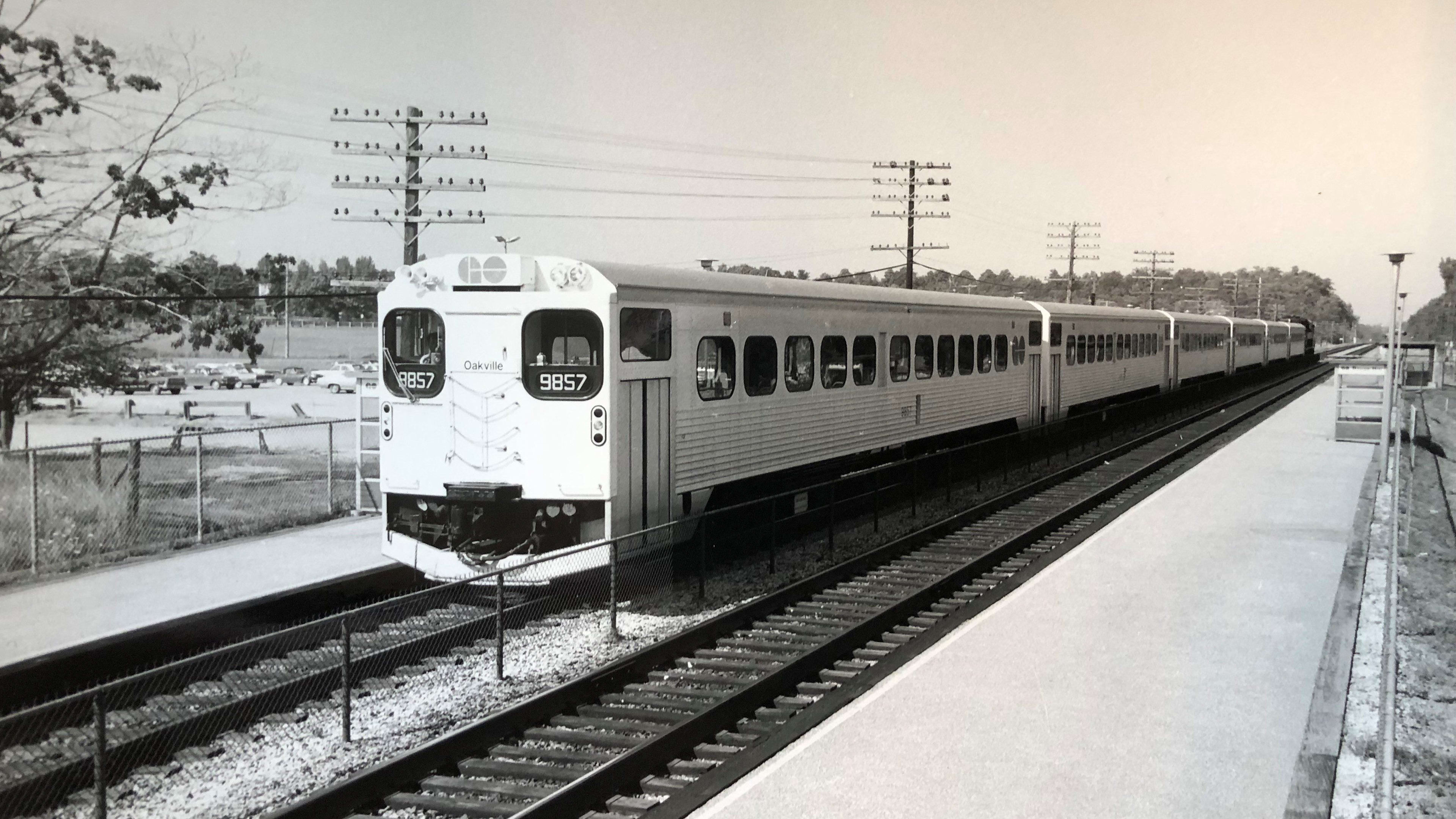Share
GO Transit turns 58!
How a three-year experiment led to the biggest transit expansion in North America.
May 30, 2025
On a crisp May morning in 1967, a train left Oakville GO Station for the very first time. What started as a three-year pilot project during a time of rapid growth in Ontario quickly became a vital service millions of people rely on every year.
Growth from the get-go
This 1966 rendering of a GO train was among the first glimpses the public would see of the future of mass transit in Ontario. (Photo courtesy Canadian Rail magazine)
In those early years GO trains serviced a then-singular Lakeshore Line, making stops from between Pickering and Oakville with some rush hour service to Hamilton. Within a year, millions were using the rail service. Just three years later in 1970, GO bus service was launched, supplementing and extending service to regions the rail service could not yet reach. The buses even had their own booth at the CNE that year.
But the momentum didn’t stop there. Just like the province, GO Transit was rapidly growing. In 1974, the Kitchener Line made its grand debut. Though, in those days, it was called the Georgetown Line.
GO passengers in the 1960s exercising their right to smoke on the train. Smoking was later banned from all GO Transit vehicles in 1978.
In March of 1978, the bi-level coach was first launched, followed by the Richmond Hill Line’s opening complete with a grand inauguration ceremony that included a band of clowns (yes, really), a ribbon cutting ceremony and a vintage locomotive. GO Transit was carrying more riders across the region in greater numbers than ever before.
The first Richmond Hill Line customers walk to the beat of a clown band. (Metrolinx photo)
The growth continued throughout the 1970s and 80s, with the launch of the Milton, Bradford and Stouffville lines and the opening of the Willowbrook Maintenance Depot – a quiet champion of GO train maintenance for decades.
Engine 910 makes short work of a ribbon, opening the Milton Line. Notice the train engineer taking a look out of the window. (Metrolinx photo)
Experiments and evolution
Rideshare services are a modern phenomenon. But in the early days of GO Transit, a similar service was offered! With Dial-A-Bus, a minivan would pick passengers up at their doorstep, taking them to a number of destinations along specific routes.
Though Dial-A-Bus was ultimately scrapped, it was a product of a time of continual innovation for the company. Between more modern coaches, more powerful and efficient locomotives and buses, expanding service to new parts of the region and even trying new styles, the service we enjoy today is the result of forward-thinking ideas and a commitment to innovation
In 1995, multiple GO stations were made wheelchair accessible, spearheading a continued commitment to accessibility and equity across our transit network.
And in 2005, a billion-dollar investment helped bring the rail network to the modern era with incremental yet effective upgrades like line extensions and grade separations (essentially, bridges) being implemented across the network.
Then in 2015, we launched the UP Express, making it easier than ever for riders to get to and from Pearson Airport.
In more recent years, initiatives like the One Fare Program, PRESTO in both Apple Wallet and Google Wallet and continual service changes and expansion make taking transit an easier choice than ever.
Building the future of transit in Ontario
Just like in those early days, GO Transit is growing alongside the region today. We’ve invested billions to transform and grow our network for generations to come.
Expanding GO will see four times as many trains traveling through Union Station, bringing faster and more frequent service across the network. The work will make travel so easy and frequent, you won’t even need to check a schedule!
Two-way, all-day service across the growing network will take 145,000 cars off the road every day and connect the region like never before – with service expanding even further to communities from Durham Region to Barrie and even Niagara. And we’re upgrading stations too, to make your journey as smooth as possible.
GO Transit served its first million riders in a matter of months. These days, we welcome nearly 60 million every year – and that number is on track to hit over 200 million by 2055. We’ve come a long way since that first ride, and we’ll be here for you for generations to come.
by Shane Kalicharan Metrolinx Editorial Content Producer
